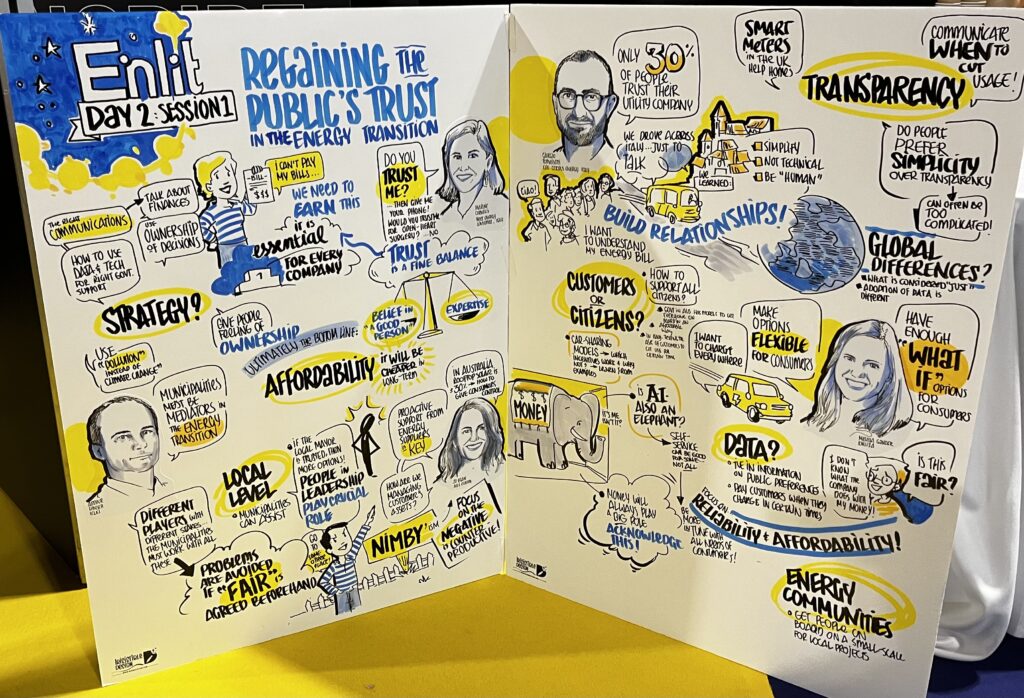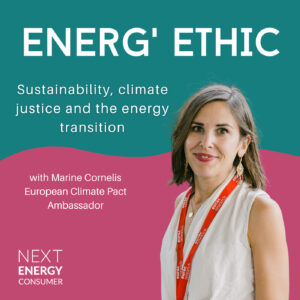Trust is a choice. It’s like handing someone a ball and hoping they don’t drop it. But once that ball hits the ground, the cracks start to show—and rebuilding it takes much more than just a good catch next time.
Right now, it feels like trust in the energy system is slipping through too many fingers. Rising energy bills, policies that feel intentionally confusing, and a growing sense that decisions are made in distant boardrooms rather than around the kitchen table are leaving people frustrated, skeptical, and disengaged.
For most people, the energy transition isn’t about lofty climate goals or futuristic grid technology. It’s about whether they can keep the lights on without sacrificing something else essential—like groceries or rent. And when they see no connection between the headlines and their daily lives, trust falters. The result? Resistance to change, skepticism about motives, and sometimes, outright hostility.

Can We Change the Game?
It’s not all bad news. There are businesses—and people—actively trying to rebuild that trust, and some of those efforts took center stage at Enlit Europe this year. I’ve attended this event many times before, but this year felt different. There was more focus on people, on outcomes that matter, and on the small but significant ways we can regain public confidence.
During one of the sessions I moderated, we tackled some of the hardest questions about trust:
- How can we show people that the energy transition makes their lives better—not eventually, but now?
- How do we tackle misinformation and greenwashing, both of which thrive in the absence of transparency?
- What’s the role of civil society in bridging the gap between communities and decision-makers?
We didn’t leave with easy answers—because there aren’t any. But what struck me was the shared understanding that trust doesn’t come from announcements or promises. It’s built in the details: transparent bills, clear communication, services that work as they’re supposed to, and benefits people can actually see.
The Pieces That Could Make It Work
Rebuilding trust in something as sprawling as the energy system feels overwhelming. But, like most big challenges, the solution might come from getting the basics right.
- Start local: People trust what feels tangible, and nothing is more tangible than your community. Local partnerships—whether it’s with municipalities, cooperatives, or trusted neighborhood organizations—help close the gap between policies and people’s lives.
- Simplify, don’t dumb down: You don’t need to patronize people to make things clear. Bills shouldn’t feel like riddles. Neither should energy offers. And when someone switches suppliers, it shouldn’t feel like they’re assembling IKEA furniture without instructions.
- Show the receipts: Trust thrives on proof. If you say people will benefit from energy efficiency programs, show them how—and make it happen quickly enough that they notice.
During the session, Giorgio Tomassetti from Octopus Energy Italy said something that stuck with me: “People aren’t waiting to trust us—they’re waiting for us to prove we deserve it.” It’s a reminder that rebuilding trust is less about grand gestures and more about consistency.
Trust Is a Collaborative Sport
One of the highlights of the event was the openness of my panellists. From demand-side flexibility to rethinking customer engagement, they shared ideas grounded in reality, not wishful thinking.
- Melissa Gander of Kaluza talked about using technology to give customers control in ways that feel empowering, not overwhelming.
- Jo Egan of AGL Energy pointed out the importance of listening—actually listening—to what people want, not just what companies assume they need.
- Arthur Hinsch from ICLEI emphasized how civil society can bridge gaps that businesses and governments often overlook, bringing people into conversations they’re usually left out of.
These aren’t radical ideas, but that’s the point. Trust doesn’t require innovation—it requires intention. And the energy sector could use more of that.
Where Do We Go from Here?
Trust isn’t something you fix with a campaign or a catchy tagline. It’s earned through action, consistency, and understanding that most people don’t want to be “engaged” consumers; they just want to feel secure and respected.
So, the next time we talk about the energy transition, maybe we should skip the big-picture narratives and start with something smaller. What does this mean for the family trying to save on heating costs? The renter in an old, inefficient building? The retiree who doesn’t care about dynamic tariffs but does care about being able to afford their bill?
Rebuilding trust isn’t just possible—it’s necessary. And the conversations at Enlit Europe are proof that some people are ready to do the work.
Now it’s about making sure that work turns into change people can feel.
What would rebuilding trust look like to you? Let me know—because trust doesn’t happen in isolation. It’s something we build together.



